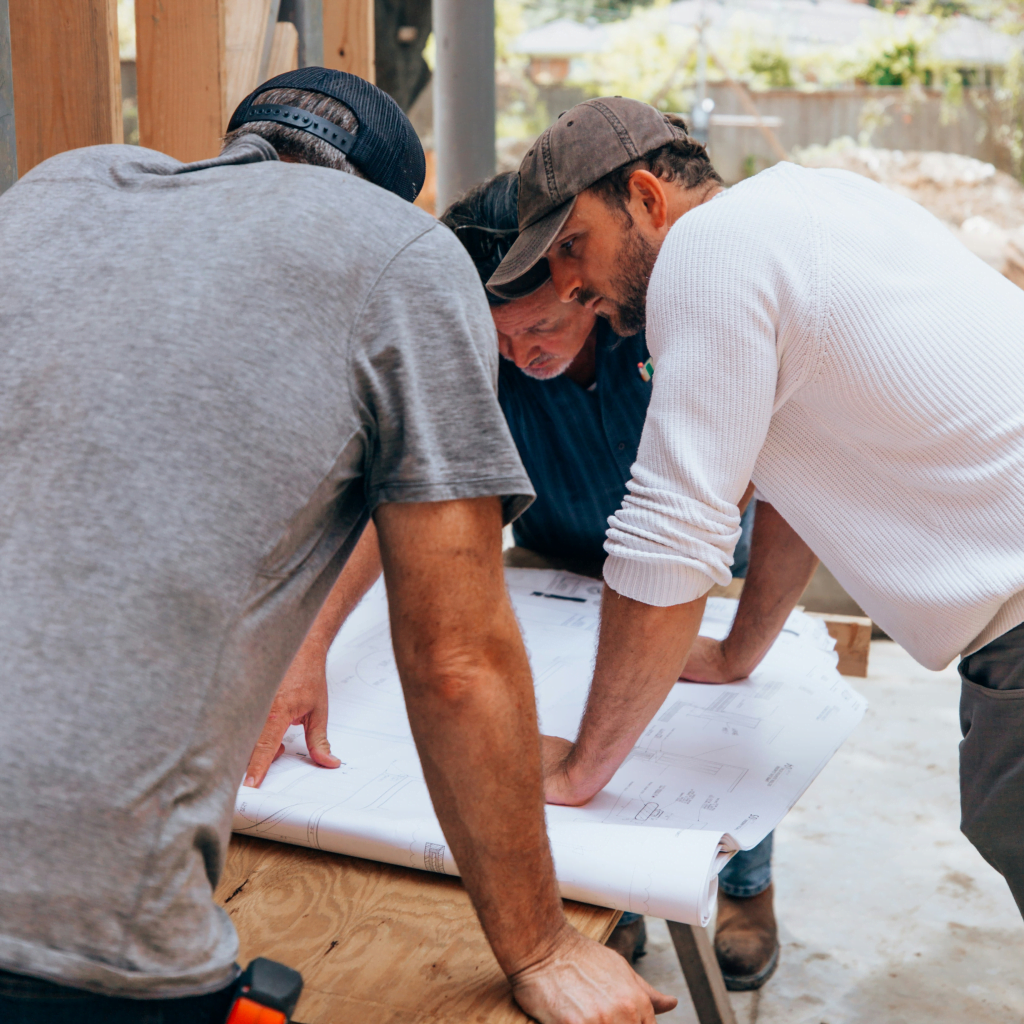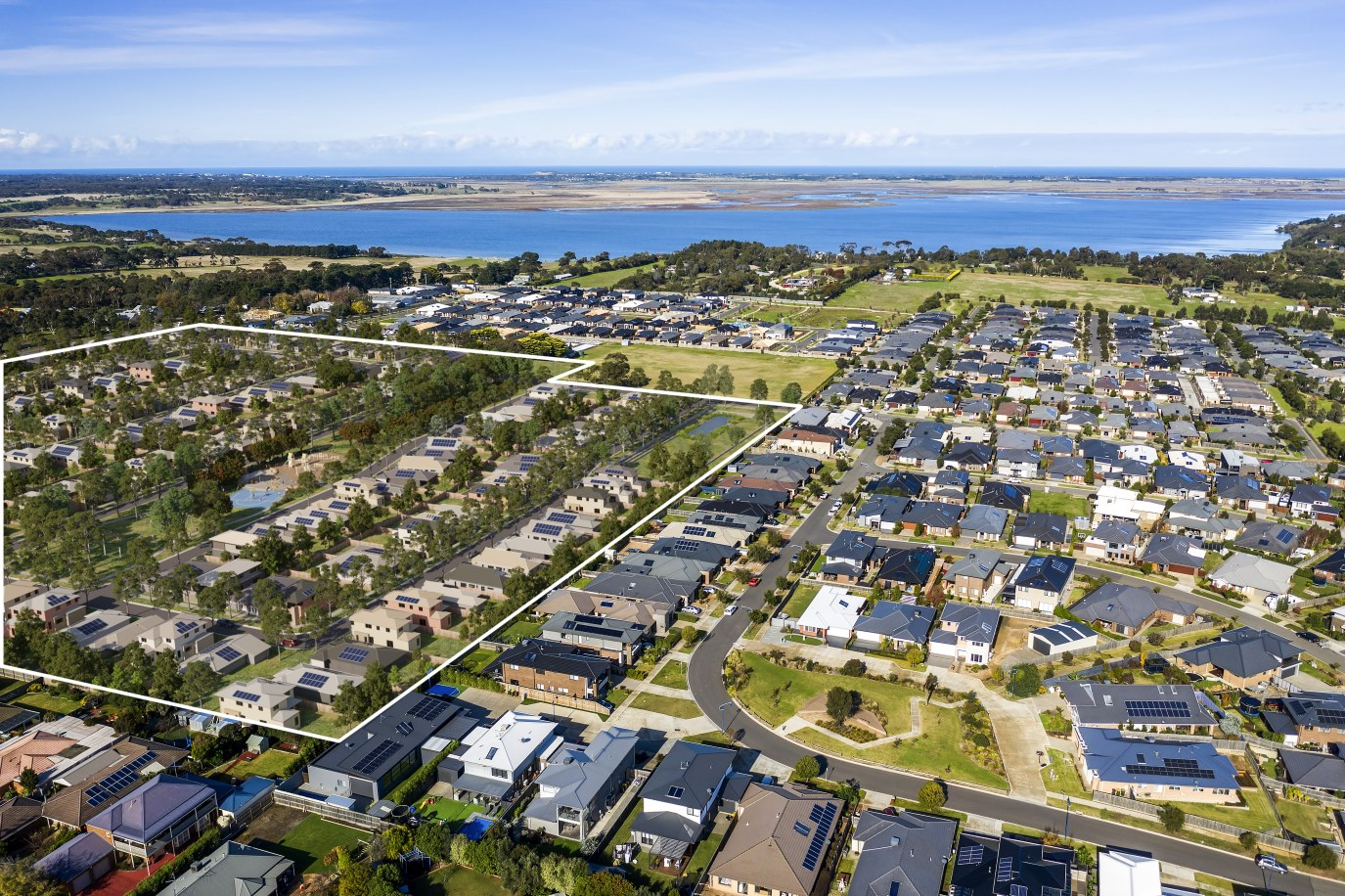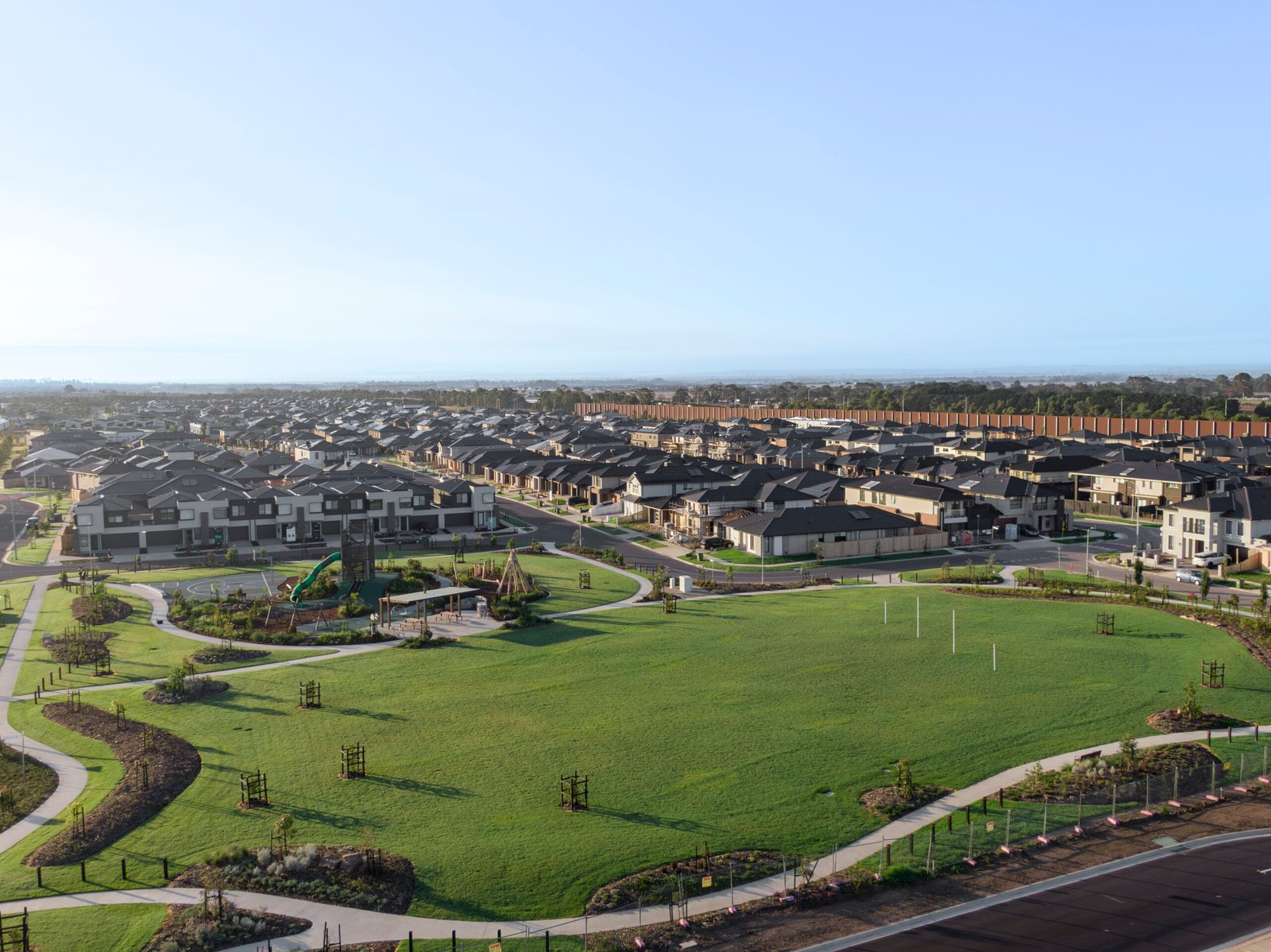You've found an ideal piece of land in a desirable suburb, but the existing house on it is outdated or dilapidated. Now, you're faced with a decision: should you demolish the old home and build your dream house, or should you consider a dual occupancy development to maximize the land's value?
This choice can be significant whether you’re an owner-occupier or a first-time investor. To help you decide, let’s explore the main differences between a knockdown rebuild and a dual occupancy project.
A knockdown rebuild entails demolishing the existing structure and constructing a new, modern single-family home in its place.
On the other hand, a dual occupancy build involves constructing two separate homes on the same plot of land, effectively doubling the potential value of the property.
What’s the difference between a knockdown rebuild and a dual occupancy build?

A knockdown rebuild entails demolishing the existing structure and constructing a new, modern single-family home in its place.
On the other hand, a dual occupancy build involves constructing two separate homes on the same plot of land, effectively doubling the potential value of the property.

Why you should consider a knockdown rebuild
The advantages of a knockdown rebuild project are numerous, particularly when you consider the costs and convenience compared to buying an established property or undertaking major renovations.
Opting for a knockdown rebuild allows you to construct a completely new home in a familiar suburb, giving you access to the latest building materials and technologies, as well as a new home warranty. Additionally, the maintenance costs tend to be lower immediately following the handover.
“Our knockdown rebuild clients are usually families who are deeply invested in creating their forever home,” an expert explains. “They want to stay close to work, family, and schools, and they see this as an effective way to maximize the value of their land, especially in high-demand areas.”

Larger families who need ample space typically choose a knockdown rebuild over a dual occupancy, especially if the lot size is too narrow to accommodate two homes. Moreover, constructing a single dwelling through a knockdown rebuild is often quicker than developing a dual occupancy, with the entire process usually taking about 18 months from start to finish.
We offer a variety of plans to fit every family’s needs, and we’re flexible in making personalized adjustments to enhance the functionality of your space—whether that’s adding custom breakfast bars, servery windows, butler’s pantries, or modifying room locations,.
The financial benefits of this approach: Knockdown rebuilds can also be more cost-effective. At Senka Homes, we pride ourselves on our transparent pricing. Additionally, you’ll avoid stamp duty, mortgage setup costs, and other fees that come with purchasing an established home.”
Things to consider with a knockdown rebuild
Choosing a knockdown rebuild specialist is crucial to avoid unexpected costs and delays during your building project.
Even seemingly simple factors like protected trees or complex planning permissions can cause significant setbacks, extending your timeline by months. It’s essential to ensure your builder is well-versed in the nuances of knockdown rebuilds and the specific regulations of your area before finalizing any agreements.
There’s no point in selecting the ideal floorplan that fits your block if it’s not going to get council approval. A competent Site Assessor can identify potential issues early on, helping to circumvent unnecessary expenses, delays, or frustrations.
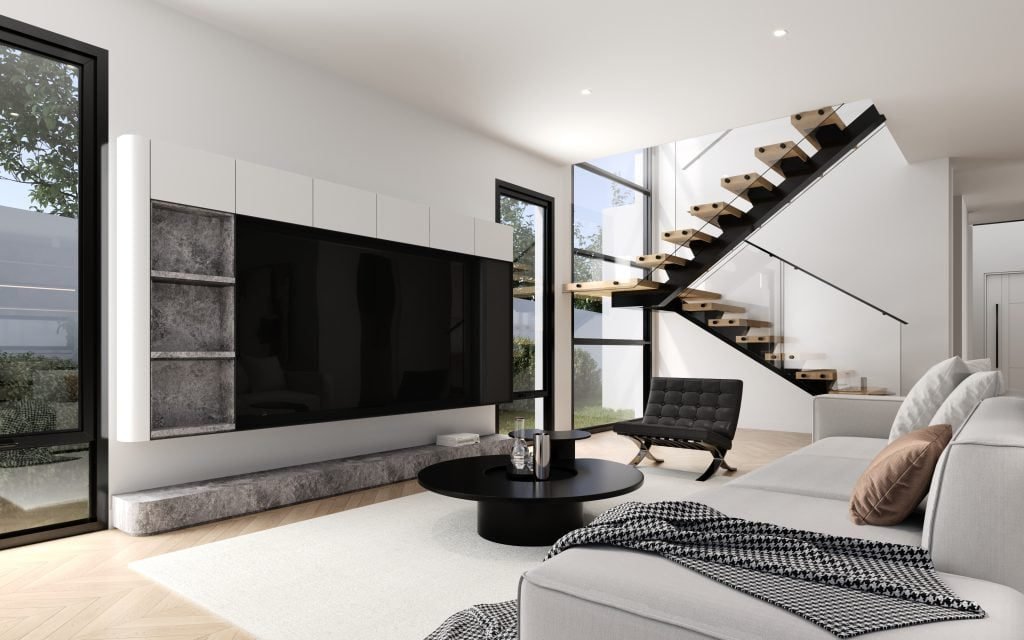
It’s important to be cautious as some builders might initially underquote the costs of a knockdown rebuild project to secure a contract. Opting for a builder who handles most of the construction services in-house can help mitigate the risk of unforeseen expenses during the tender process.
At Senka Homes, we manage all custom joinery, electrical work, and heating/cooling systems internally. This approach is not only convenient, allowing for a high degree of personalization of your home, but it also helps in maintaining the budget and adhering to the projected timelines.
Considering that many opt for a knockdown rebuild to create their forever home, investing in premium upgrades can be worthwhile. Features like an expansive butler’s pantry, additional bathrooms, skylights, or bi-fold doors can significantly enhance the comfort and value of your home.
Ensure that your builder includes high-quality materials and works with reputable suppliers. This enables you to allocate your budget towards those premium features that truly matter to you.”
Why you should consider dual occupancy
Embarking on a dual occupancy build can offer double the potential benefits compared to constructing just one home—if executed properly.
Building two homes on a single block of land maximizes its value, an advantage that’s particularly significant in suburbs where property prices are robust and rentals are in demand.
Dual occupancy is especially suited for various types of homeowners including owner-occupiers who might live in one unit while renting the other, downsizers looking for a smaller residential footprint while generating income, and investors aiming to enhance rental yields by leasing both units. This strategy can also improve rental acquisition and retention by offering more leasing options.
Additionally, customizing each unit with different fixtures, fittings, and interior design styles can make the properties appealing to diverse segments of the rental market, increasing their attractiveness and functionality for different types of tenants.

Dual occupancy provides a financially viable option for customers who wish to own a home while working with a tighter budget, as it allows them to share the cost of land and rates with family or friends. Alternatively, living in one unit while renting out or selling the other can also be a beneficial strategy.
“About 75 percent of our clients are owner-occupiers who appreciate the savings and convenience that come with dual occupancy, whether it’s a duplex or townhouse build. This includes parents partnering with their children to afford the property more easily, siblings who wish to live close to each other, and multi-generational families looking to keep elderly parents nearby yet independent.”
Andrew adds, The flexibility of a dual occupancy build means each party can tailor their home’s interior to their personal taste, you don’t have to match the style of your relatives! This allows for individual expression while still benefiting from the economic and logistical advantages of shared property ownership.
Things to consider with a dual occupancy build
It’s crucial to understand that managing double the dwellings can also lead to double the complications, especially with an inexperienced builder.
The timeline for completing a dual occupancy project can range from 18 to 24 months, largely influenced by council restrictions and other regulatory considerations. This extended timeframe is an important factor for those working with tight construction deadlines to keep in mind. Choosing a seasoned builder who has specific experience with dual occupancy projects can help mitigate potential delays and complications, ensuring a smoother process from start to finish.
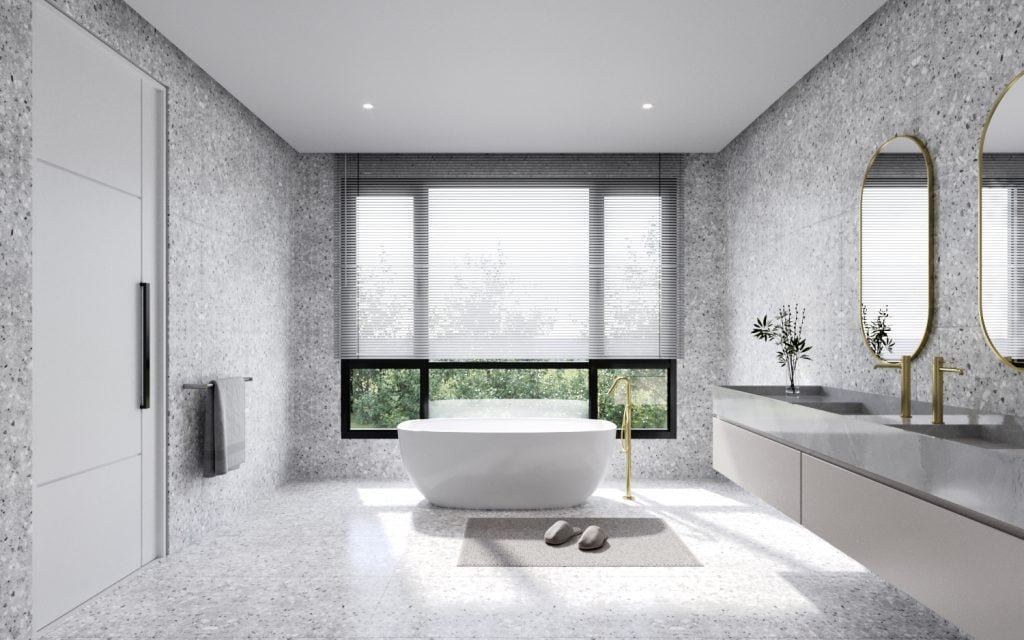
Dual occupancy builds require careful navigation of local zoning and building codes, making it essential to choose a builder with specific expertise in these areas.
Some councils may have reservations about densifying a neighborhood with additional houses, how the design of the homes aligns with the local aesthetic, or the practicality of having two driveways on a single lot. Your builder must be proactive in addressing these issues early in the planning stage, making necessary adjustments before submitting any council applications that might be rejected.
The feasibility of a dual occupancy build also depends on the specific characteristics of the land, such as its slope, size, and orientation.
Investors need to carefully assess the potential rental yields in their area to determine if a dual occupancy build is financially viable. Consider the size of the homes and the quality of internal finishes to maximize land value and rental income without overcapitalizing. Fortunately, with Senka Home’s high standard of inclusions, investors rarely need to spend extra on upgrades. This approach helps balance investment costs with the expected returns, ensuring the project remains profitable.

